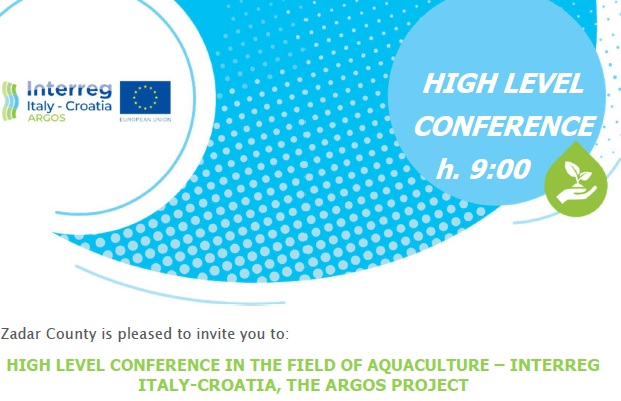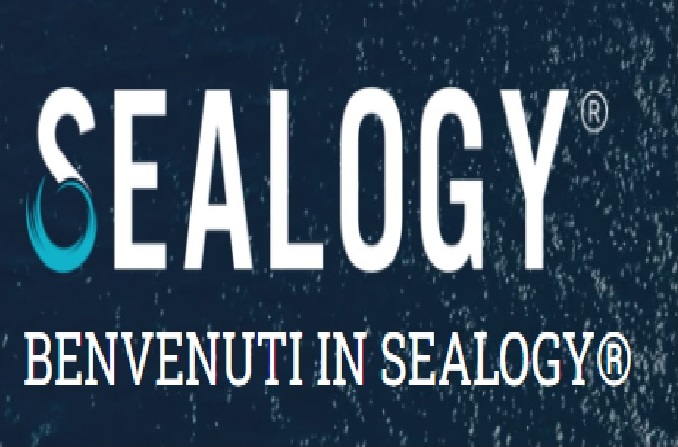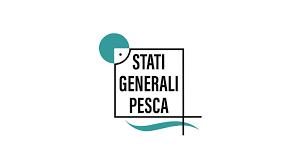
It is bonaccia, the sea exudes carefreeness and some soothing serenity. It is a common image that we can see and feel during these spring days if we look towards the sea. But the people who live from him, with him and for him, look at him through a different prism. A prism that sees beneath that peaceful surface all the force of laws, directives, ordinances and ordinances as the inevitable links in the regulation of economic and all other activities in the relationship between man and the sea. Unfortunately, in recent decades we have witnessed an increasing negative impact on the marine ecosystem such as overfishing, eutrophication, degradation of coastal and marine habitats, anthropogenic noise, climate change, waste into the sea, especially plastics, and the arrival of alien species, some invasive. We will dedicate this text to only one part of that relationship, and that is fishing and aquaculture. The 1970s were the golden years of world fisheries, with catches of over 100 million tonnes. Even then, warnings were issued from scientific circles about the biological limitations of fishery resources and the need for planned management. Unfortunately, the irresponsible and unsustainable practice of overfishing has continued, leading to the devastation of first coastal and demersal habitats, then pelagic, and eventually many species to the brink of extinction. This declining catch trend has spurred the development of controlled cage farming of fish and other marine organisms that is becoming the fastest growing food production sector in the world. In 2014, aquaculture exceeded the world's total fishing catch. Contrary to the global trend, aquaculture in the EU has been stagnant in production for the last 15 years. The reason for this lies in the very strict regulation of this activity and the negative public perception of the relationship and impact of aquaculture on other activities and sectors (tourism, nature protection,…). Of course, this relationship does not necessarily have to be negative, so all the hundreds of instruments that will be discussed are a matter of compromise and measures as a lever in finding a satisfactory sustainable solution for all involved in the process. On the example of fisheries and aquaculture, we will present all the complexities in arranging relations from European to local level and resource management between all participants in the process, bearing in mind that this is only part of the story to dive into its problems , scientific research and other chapters of the same denominator.
The backbone of EU fisheries policy is the Regulation on the Common Fisheries Policy, which manages the EU's fishing fleet and fisheries fund with a view to achieving environmental, social and economic sustainability. The overall objective of the Common Fisheries Policy is to ensure that fisheries and aquaculture activities contribute to long-term, sustainable environmental conditions that are necessary for economic and social development. The Common Fisheries Policy should contribute to increased productivity, an adequate standard of living in the fisheries sector, and stable markets, and should ensure the availability of resources and the availability of supply to consumers at reasonable prices. In addition to being an important fishing power, the EU has become a key player in international fisheries management as the world's largest seafood market, covering half of its consumption with imports and more than a fifth with catches by the EU's fishing fleet outside the Union. The European Maritime and Fisheries Fund is one of the EU's five structural and investment funds. It aims to encourage sustainable activity covering the whole value chain of fisheries and aquaculture, to support diversification and job creation and territorial cohesion, and to finance the implementation of the Common Fisheries Policy. Thus, it provides financial support to the entire fisheries policy framework described above. One of the strongest in a series of measures to preserve sustainable fisheries is the management of fishing capacity that needs to be in line with fishing opportunities. To achieve this, Member States shall send the Commission each year a report on the balance between the fishing capacity of their fleets and their fishing opportunities. If the assessment clearly shows that fishing capacity and fishing opportunities are not effectively balanced, the Member State shall prepare and include in its report an action plan for each fleet segment in which overcapacity occurs.
According to the Fisheries Act, there are two types of fishing privileges in Croatia: the privilege for commercial fishing and the privilege for small-scale coastal fishing. Fishery products from both types of fishing may be sold, and the difference is in the privilege holder and the catch limit. Small-scale coastal fishing may be carried out by a natural person on a privileged basis, in a maximum of three adjacent fishing sub-zones. In small-scale coastal fishing, it is allowed to catch or collect a total of up to five kilograms of fish and other marine organisms per day. The law also recognizes recreational and sport fishing that can be performed by a natural person with a purchased permit and daily limits as for small-scale coastal fishing, and fishing for scientific and scientific-educational purposes, including fishing for aquariums open to the public. All these fishing activities are accompanied and regulated by about 50 laws, regulations, decisions or regulations, which must be harmonized with the EU Common Fisheries Policy. In the Primorje-Gorski Kotar County, about 575 vessels are registered for commercial fishing, and the rest of the fleet of about 370 vessels consists of vessels used in small-scale coastal fishing. In recent years, fishermen from the area of PGC have achieved about 14% of the total landings of fish and other marine organisms in the Republic of Croatia, which speaks volumes about the importance of the County for fisheries in the Republic of Croatia. The largest part of the catch falls on swimmers' nets, ie sardines and anchovies, about 80%. Retractable fishing gear accounts for about 10% of the catch, while standing nets account for just over 3% of the total catch. These are all data collected by fishing registers and reports that are part of the mandatory activities of fishermen in the process before the aforementioned cycle of fisheries management and fish stock with a view to sustainable fisheries between the line ministry, scientists and fishermen.
With regard to aquaculture, the new basic regulation of the Common Fisheries Policy contains strategic guidelines for common priorities and objectives for sustainable development and aquaculture. The strategic guidelines form the basis of multi-annual national strategic aquaculture development plans. In addition to determining the content of plans and prescribing the obligation to draw them up, the new basic regulation includes aquaculture in the scope and in the area of financing and market organization. Given the expected importance of aquaculture in achieving the goals of the latest EU development strategy, this activity is particularly recognized in the second key segment of the Common Fisheries Policy, structural policy and financing. The largest number of regulations that directly affect the performance of aquaculture activities at the EU level is in the field of environmental protection. Key regulations include the Water Framework Directive, the Directive on the Protection of Natural Habitats and Wild Fauna and Flora, the Wildlife Conservation Directive, the Environmental Impact Study Directive, the Marine Strategy Framework Directive, the Alien and Non-Local Species Regulation. aquaculture, and the Strategic Environmental Assessment Directive. The Habitats Directive and the Birds Directive together provide a framework for the establishment of the Natura 2000 network, which may lead to limitations on the technology that can be applied in aquaculture activities in these areas.
In Croatia, aquaculture is regulated by the Aquaculture Act and 7 related ordinances. Units of local self-government or counties with their departmental departments, public institutions and other relevant and interested stakeholders in coordination develop spatial plans that define, among other things, areas for aquaculture and Natura2000 areas in the maritime domain. The current spatial plan of PGC allows the installation of buildings for fish and shellfish breeding of smaller capacity, which is 250 tons per year for offshore farms. Exceptionally for the farms Podno Osorčice, Mali Lošinj and Uvala Zaplot - Veli bok, island of Cres, the allowed quantities of cultivation can be up to 990 tons per year. Cage farms must have the necessary coastal capacities and the necessary infrastructure, which are specific for each project separately, depending on the size of the farm and the species that are bred. The County of Primorje-Gorski Kotar accounts for approximately 10% of the total white fish farming in Croatia, and unfortunately it no longer has a single shellfish farm in its area. Management measures for marine Natura2000 areas, including the regulation of fishing activities in these areas, are currently being adopted. When they are adopted, as in all other parts of the sea, there will be a problem in their implementation or supervision of space by professional services and inspections that are chronically deficient.
The European Maritime and Fisheries Fund, as already mentioned, contributes to promoting competitive, environmentally and economically sustainable and socially responsible fisheries and aquaculture, encourages the implementation of the Common Fisheries Policy, promotes balanced and inclusive territorial development of fisheries and aquaculture areas, and encourages development and implementation. integrated maritime policies in a way that complements cohesion policy and the Common Fisheries Policy. The Agriculture and Fisheries Development Strategy of the Republic of Croatia 2020-2030 "More than a farm" contains a vision and plan for strategic transformation of the sector not only at the level of agricultural operations, but also considers challenges, opportunities and actors affecting the wider agri-food sector, including production , processing, distribution of products, market and consumer requirements according to the "field to table" system, which in this case would mean "from sea to table". The homologous Aquaculture Development Strategy 2020-2030 is called "More than a pond". Her vision focuses on four strategic goals, from increasing the productivity and resilience of aquaculture to climate change, through strengthening the sector's competitiveness, rebuilding rural and coastal economies and improving living conditions in rural and coastal areas, and fostering innovation in the aquaculture sector.
The Primorje-Gorski Kotar County Development Plan 2021-2027 is the main medium-term act of strategic planning of importance for the regional self-government unit, which is adopted instead of the county development strategies. The development plan defines specific goals for the implementation of strategic goals from long-term acts of strategic planning and it must be harmonized with national plans and spatial plans at the local level. Fisheries with mariculture have a long tradition in the Primorje-Gorski Kotar County, and the existing resources on the one hand, and on the other hand the spatial planning conditions, enable further successful development of fisheries and their accompanying activities as important elements of development. The coastal area of the Primorje-Gorski Kotar County, which includes the coastal belt of the mainland and islands, is certainly its most important development resource. Fishing is a traditional activity of the coast and islands of the County and a source of livelihood for a large part of the coastal and island population. Fishing is also related to the tourist season, where it represents a significant economic activity for promoting the gastronomic offer of the Primorje - Gorski Kotar County. The fisheries sector of the Republic of Croatia, including the Primorje-Gorski Kotar County, is facing various challenges. The state of resources shows that more efficient regulation of the sector is necessary, as well as the adoption of management plans with measures for a number of tools and the types they use. At the same time, it is a great challenge to find the right balance of activities that will ensure the sustainability of the sector, but also the conservation of resources.
On that track, many EU projects have already passed through the Adriatic, and there will certainly be many more, aimed at regulating the situation in this sector. The Primorje-Gorski Kotar County is still participating in one of these, ARGOS, which is trying to connect all actors in the "industry" and lay the foundations for more successful and efficient cooperation and governance. The acronym ARGOS summarizes the project of interstate management of sustainable fisheries and aquaculture as a means of protecting marine resources in the Adriatic. The project is co-financed by the Interreg Italy-Croatia 2014-2020 program. It started in 2020 and is scheduled to end in 2023. The project involves 13 partners from Italy and Croatia with a leading partner, the Friuli Venezia Giulia Region. It is about the cooperation of Italian and Croatian regions and counties, regional development agencies, scientific institutes, and as associated partners are the line ministries from Italy and Croatia. The project plans to establish a common management framework in which all institutions responsible for fisheries and aquaculture in the program area will act as a whole in the management and protection of shared biological resources, under the guidance of scientists. It is intended to consolidate the institutional dialogue between Italian and Croatian institutions relevant to fisheries management and aquaculture activities in order to establish a coordinated framework for the management of Adriatic fisheries resources. In addition to the political level, efforts are being made to strengthen the knowledge-based decision-making process by establishing a permanent scientific network between scientific and research centers, promoting the exchange of knowledge and the development of new common knowledge. The expected result of the project is the adoption of sustainable behaviors and practices by entities in the fisheries sector as the main way to ensure the conservation and protection of marine resources, and to acquire knowledge and develop opportunities, especially in spatial planning documentation, to launch innovative inland platform systems, and consider opportunities for offshore farming without compromising the production capacity of the environment. Numerous studies of the current state of fisheries and aquaculture are being prepared within the project, in order to obtain quality bases for the implementation of harmonization and assessment activities in fisheries and aquaculture in the Adriatic partner area, and to establish common access to data on fish stocks and eco-biological trends. status of marine resources. To this end, it is necessary to create missing databases, analyze them and propose measures for sustainable fisheries and aquaculture management in each project area. Also, specific data on fisheries activities collected at local level, which are important for fisheries and aquaculture management under national laws and EU directives, and with regard to natural and human factors, will be the framework for defining 14 common schemes and protocol, with the support of scientific institutions, members of the consortium, which will ensure that decisions taken within the envisaged governance framework are based on scientific grounds.
We believe that ARGOS is a project that will probably not cure all the problems of the fisheries and aquaculture sector, but its goals and activities set the right diagnosis and decided to adapt much of the prescribed therapy to better horizontal and vertical connectivity and sector management based on the model "bottom up" based on all specificities of the Adriatic that will result from its results at the end of implementation.
We wish him a peaceful sea!



